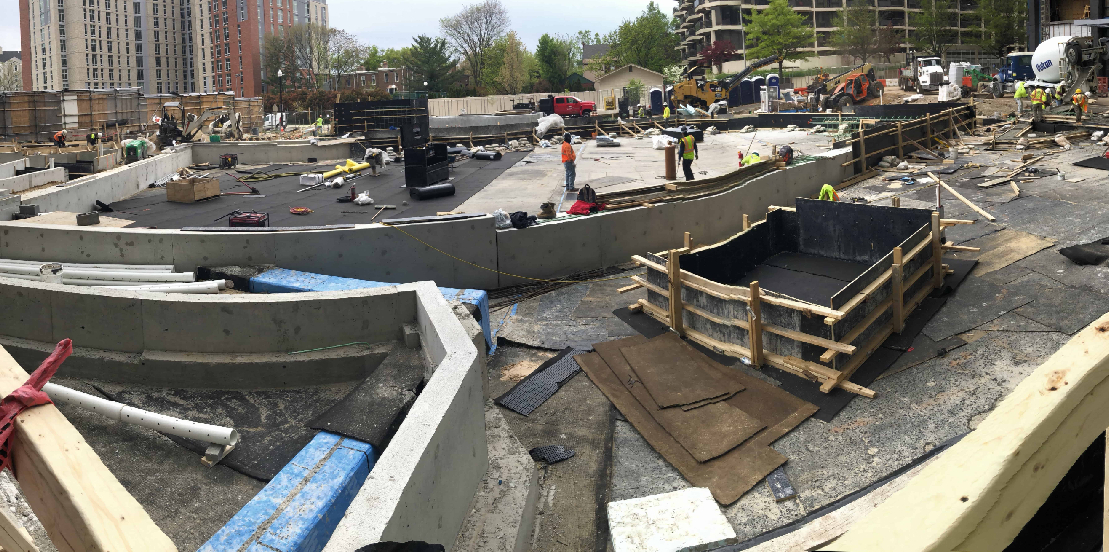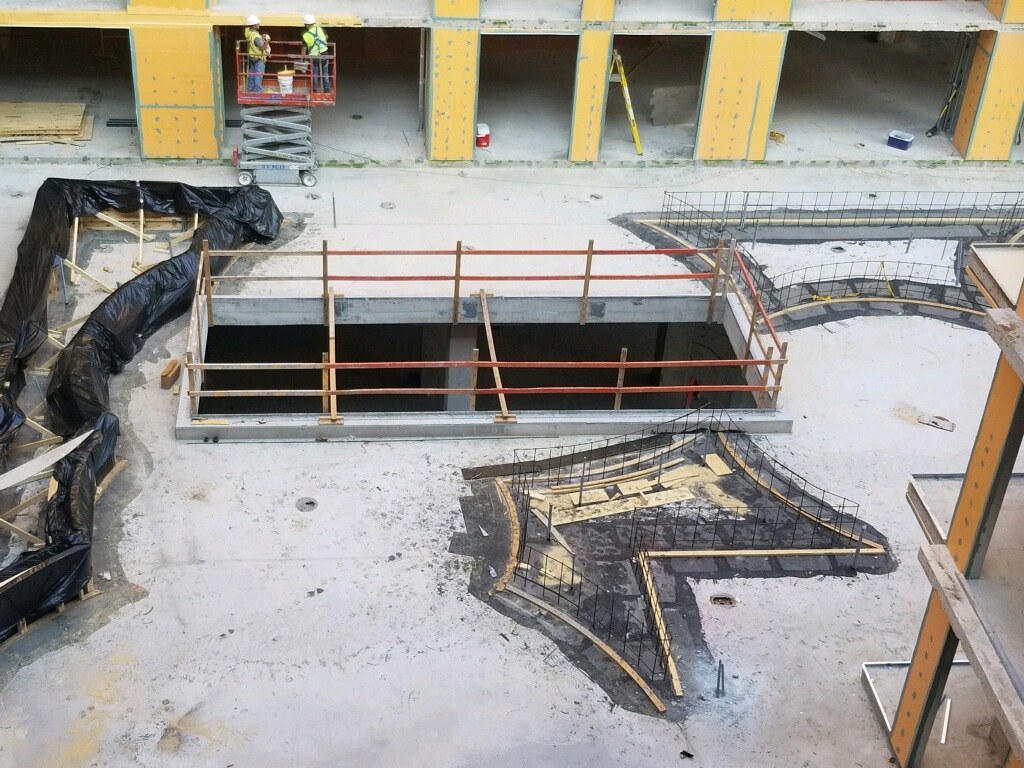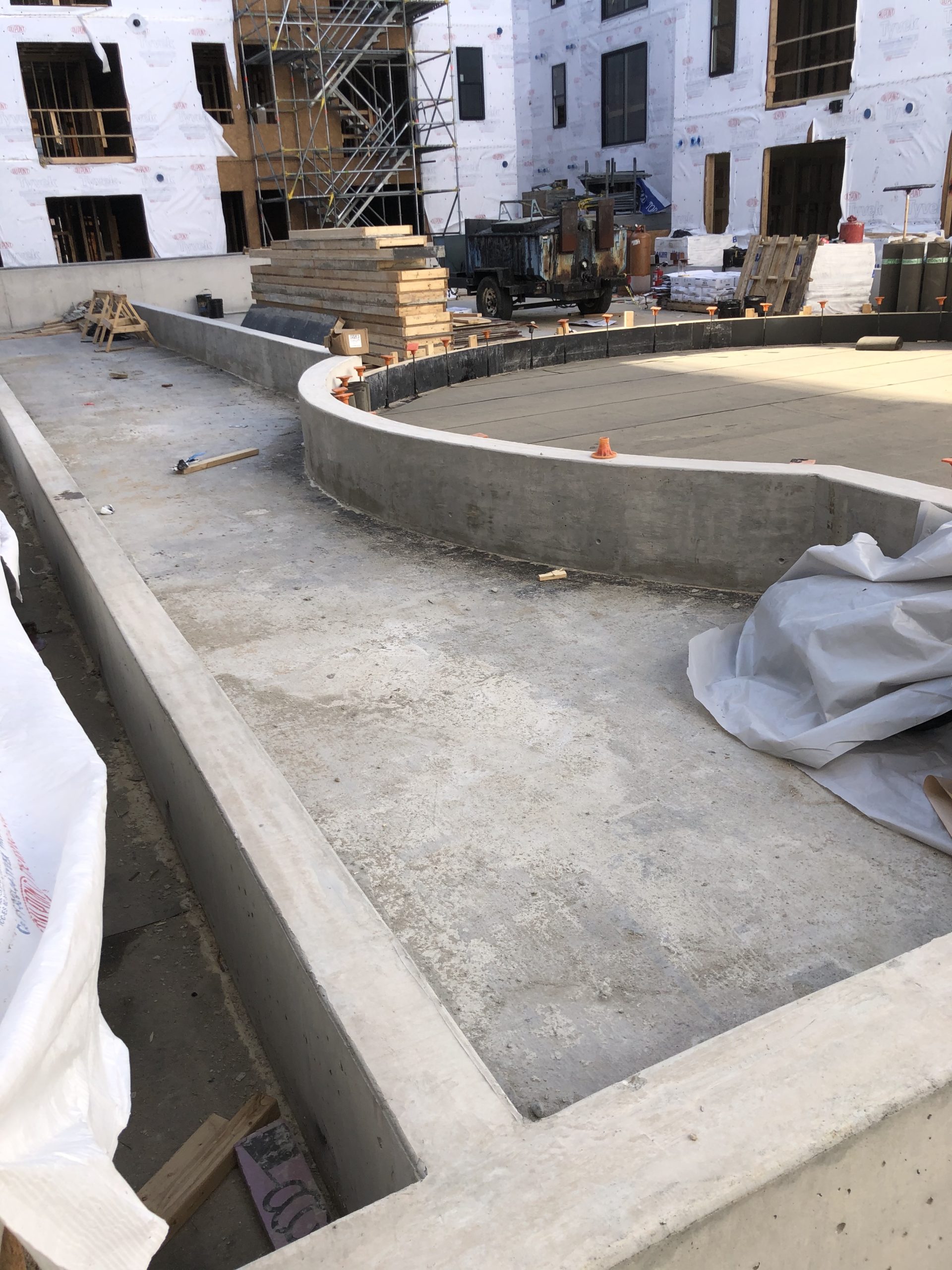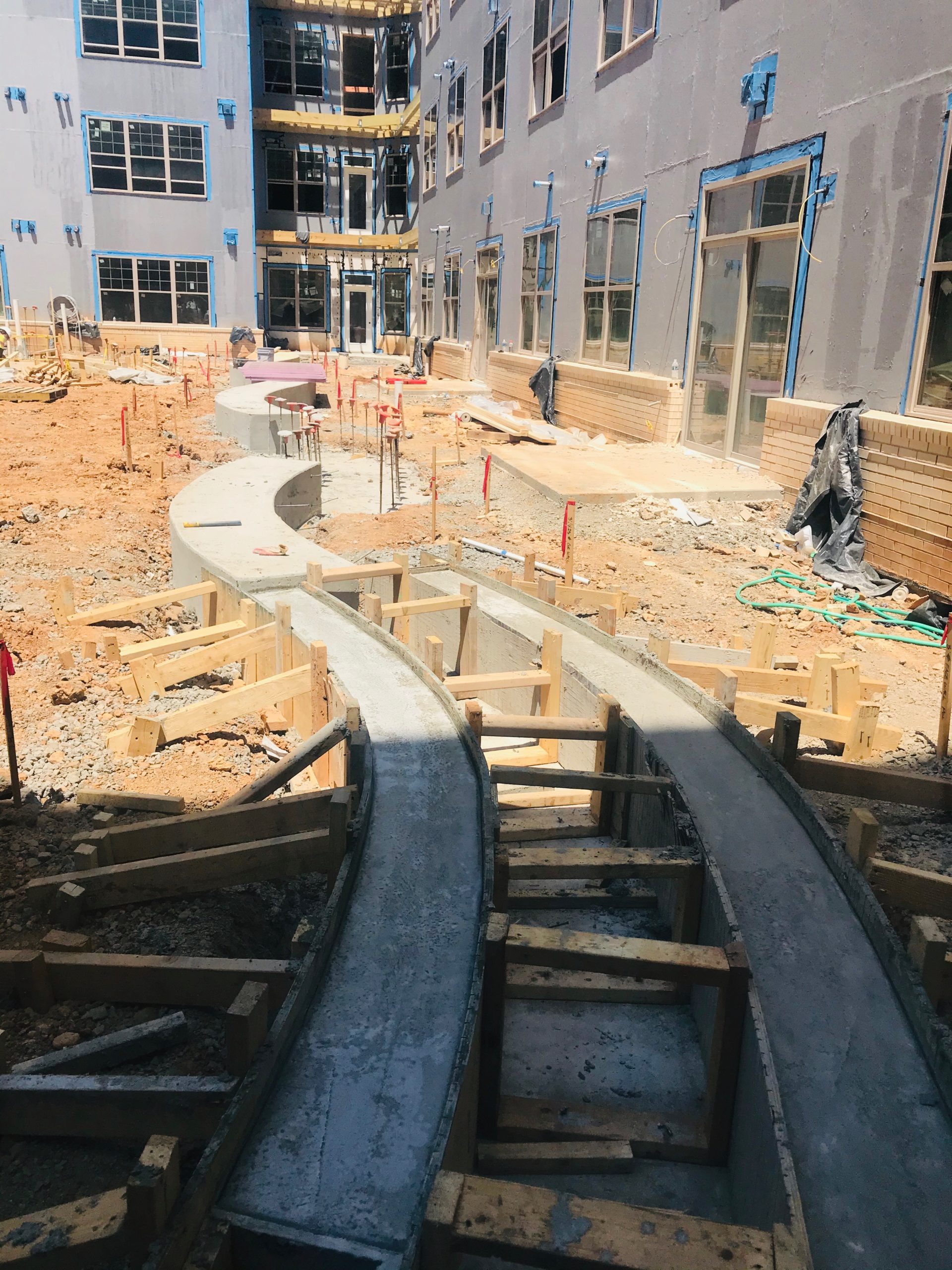Sometimes your project falls outside of “ordinary” concrete construction. Retaining walls, decorative concrete, suspended concrete slabs are just a few examples of ways concrete can be used to enhance your building both inside and out.
Cast-in-place concrete relies on pouring cement slurry into a pre-designed formwork. After the concrete hardens, the form is removed. Cast-in-place concrete isn’t a new idea; Thomas Edison was experimenting with it in 1899!
Edison realized that cast-in-place concrete boasted many benefits, including:
- The ability to reinforce it, increasing strength and resiliency
- Better insulating qualities
- Versatility
- Ease of installing for the concrete company
- Increased cost effectiveness
A retaining wall is a rigid structure that is used to support soil at different elevations. They are frequently seen in landscaping, separating water from land, or holding back soil from road surfaces and trenches. These walls are most frequently made of concrete, stone, or masonry.
Retaining walls can loosely fit into one of three types:
- Gravity walls: The weight of interlocked stones gives these walls the durability they need to hold the soil in.
- Cantilevered walls: Most typically used in commercial applications, a cantilevered wall relies on a base slab, steel bar reinforcement, and poured concrete.
- Mesh walls: These retaining walls are used in areas of high erosion and are covered by a layer of wire to give them additional support.
Due to the complexity of engineering and creating a strong wall, it’s necessary to call in retaining wall contractors. Professionals like Intown Restorations Inc. will save you money, ensure a beautifully finished product to enhance your landscape, and provide the highest quality workmanship for your specific project.
Concrete and masonry walls don’t have to be boring. There are many ways to add beauty and polish to your walls, including adding stone accents or veneers, using unique finishes, and stamping the concrete.
Intown has become one of the leading contractors in the Mid-Atlantic area delivering unparalleled workmanship and results for architectural wall structures. No angle is too complex nor any shape untenable, Intown’s experience and skill at building specialty concrete structures spans 30 years and offers a unique opportunity for those projects seeking remarkable results.
A suspended concrete slab refers to concrete that is not in direct contact with the ground. These can be used for roofing or for floors that are suspended above the ground. Suspended concrete slabs can also be placed to create a suspended staircase, floating walkways, and other decorative accents both inside the building and outside. A suspended slab relies on beams for support.
Suspended slabs bring the energy efficiency and lasting durability of concrete to your project while adding a sound barrier between different levels.
An elevated slab is a suspended concrete plate in contrast to a concrete plate supported by beams. The elevated slab is typically designed with steel reinforcement and creates the floors and ceilings in a multi-level story building.
Landings and abutments are built to specification and design/intended use.
Landings and abutments are built to specification and design/intended use.





